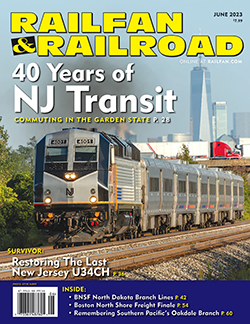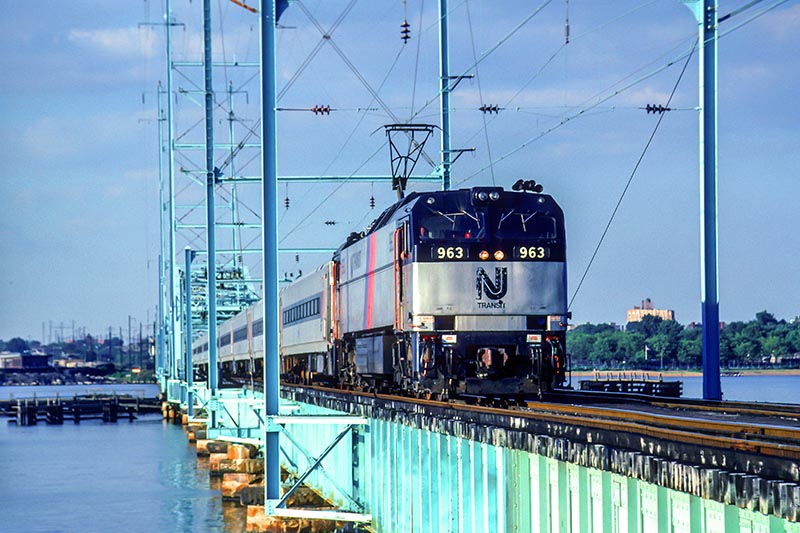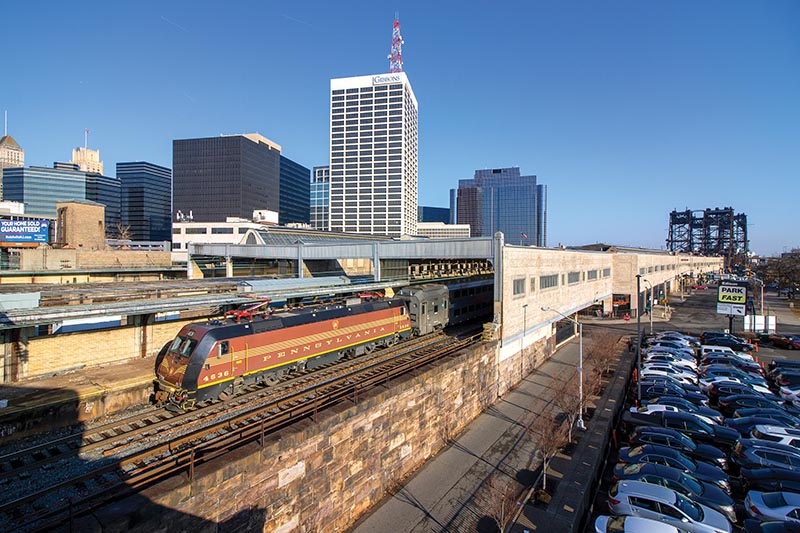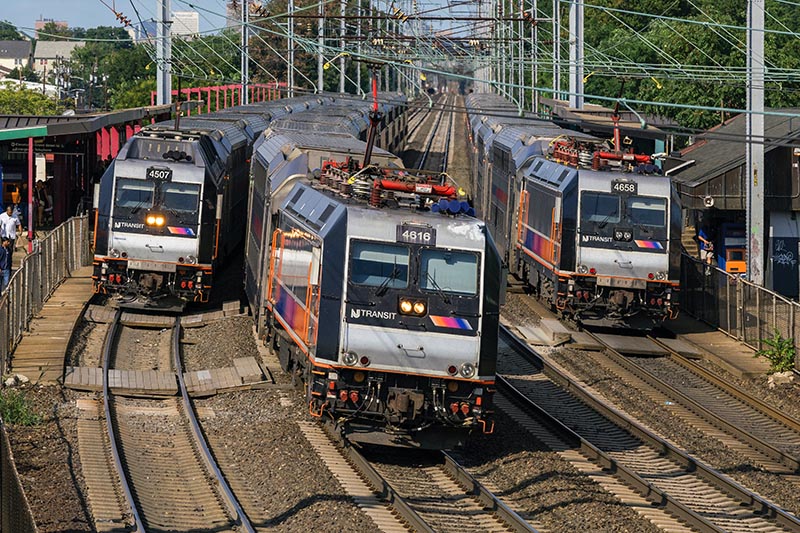 by Steve Barry/photos as noted
by Steve Barry/photos as noted
On April 1, 1976, the railroad map in New Jersey turned blue. Save for a few short lines, Conrail took over the bulk of the Garden State’s railroads, combining some of the largest Northeastern railroads that had declared bankruptcy in the wake of Penn Central’s collapse in 1970. It was the dawning of a new age in freight railroading, one that would make a herculean effort to bring calm to the chaos. As part of that deal, however, Conrail also found itself in the passenger railroad business. Five of its component roads had commuter operations in New Jersey — Erie Lackawanna, Central Railroad of New Jersey, Penn Central (former Pennsylvania Railroad), Reading, and Pennsylvania-Reading Seashore Lines. All these operations suffered from years of neglect, and all were losing money, despite regular subsidies from the state. Focused on rebuilding the freight network, the trains, stations, and staff required to operate a reliable commuter network were all a strain on the new government ward. Something needed to be done.
There was some relief on the way, and part of that had been set up a few years earlier. In 1966, New Jersey established its Department of Transportation, the first of its kind in the U.S. In 1967 it began to assist in the funding and operation of the Jersey Central and Erie Lackawanna commuter systems. This assistance later came to Pennsylvania Railroad (which became Penn Central after merging with New York Central in 1968). Still, on Conrail’s first day in 1976, it found itself as the second-largest passenger train operator in the country, with operations serving the New York metropolitan region, Philadelphia, Boston, Cleveland, and Chicago — the first two of those with lines in New Jersey.

ABOVE: E60 963 leads a Bay Head-bound train across the Raritan River into South Amboy in September 1990. The electric locomotive will be removed from the train in South Amboy and diesels will lead the train the rest of the way to Bay Head. —Steve Barry photo
New Jersey Transit was created in 1979, primarily to operate the state’s bus lines. Its role in commuter rail operation slowly expanded, with timetables as early as 1980 bearing the NJT logo, even though those services were still being operated by Conrail. The new branding was a sign of things to come.
Changes came gradually in the 1980s as NJDOT first exited the Philadelphia market with the discontinuance of the former Reading/CNJ Wall Streeter/Crusader through service operated with SEPTA between Philadelphia and Newark, N.J., in July 1981 (and NJT service to West Trenton was discontinued in 1982). The Budd Rail Diesel Cars running on the former PRSL were also discontinued, with service to Ocean City and Cape May ending in 1981 and to Atlantic City in 1982. These services did not enter Philadelphia directly; passengers transferred to the PATCO High Speed Line at Lindenwold for a rapid transit ride across the Benjamin Franklin Bridge over the Delaware River. The PRR main line was split at Trenton, N.J., with SEPTA operating commuter service on the south end into Philadelphia, and the northern end operated by NJDOT. In 1976, Amtrak completed its purchase of the Northeast Corridor from Conrail, managing operation of the complete route between Washington, D.C., and New York.

ABOVE: Pennsylvania Railroad-“wrapped” ALP46 4636 shoves Train 3720 into the Newark Penn Station, itself opened by PRR in 1935. The massive Dock Drawbridge can be seen in the background on January 15, 2020. —Duncan Mara photo
The Northeast Rail Services Act of 1981 was Conrail’s out from the burdens of the commuter business. Under the terms of the act, each state agency currently under contract to Conrail would be required to make other arrangements by the end of 1982. Amtrak responded with a proposal of its own; because its original charter excluded short-haul operations, it proposed the creation of a new Amtrak Commuter subsidiary that agencies in Pennsylvania, New Jersey, New York, and Connecticut could all contract with.
That idea quickly fell out of favor, as did a proposal for direct pooling of resources and cooperation between NJT, SEPTA, New York’s Metropolitan Transportation Authority, and Connecticut DOT. Boston & Maine Railroad also approached the state of New Jersey with a proposal to operate the commuter trains on a contract basis, much as they did in 1977 for Massachusetts Bay Transportation Authority in Boston. One of the provisions of the act was to allow a state to directly take over funding and operation of its commuter lines, which New Jersey ultimately decided to do.
On January 1, 1983 — just over 40 years ago — NJ Transit absorbed the rail assets and employees from Conrail, establishing the Newark Division and the Hoboken Division (the two main terminals) for its commuter lines…



